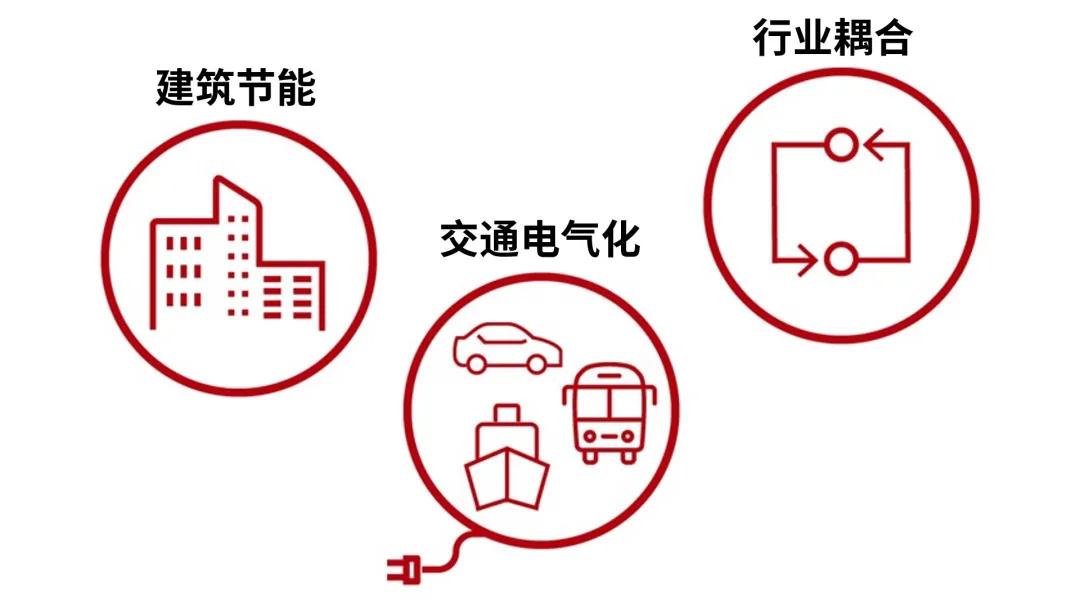财经|实现1.5°C温控目标,这道“数学题”答案在此
减缓气候变化是全社会面临的共同挑战 。 2015年12月达成的《巴黎协定》中为全球应对气候变化设定了双重目标:本世纪全球平均气温升幅与工业革命前水平相比不超过2°C , 并将全球气温上升控制在前工业化时期水平之上1.5°C以内 。 如何做好这道“数学题”?
请看详细报道↓↓↓
丹麦丹佛斯公司联合全球知名咨询机构法维翰咨询近日发布研究报告《如何在城市中实现1.5°C温控目标》 , 指出城市区域若要在2050年前实现1.5°C温控目标 , 在技术和经济上都是可行的 。
How to reach the 1.5°C target in urban areas ,a joint report by Danfoss and Navigant ,a global consulting firm with deep insight into energy industry ,finds that it is both technological and economically feasible for urban areas to achieve the 1.5-degree target by 2050.
研究报告提出 , 如果决策者优先投资于电气化交通系统、建筑节能系统(包括自动控制、区域能源系统等以保证供暖、制冷系统的高能效表现)以及行业耦合 , 达到1.5°C的目标便可实现 。
If policy makers prioritize investments in e-mobility ,energy saving systems in buildings ,including controls ,and district energy ,to ensure energy efficient heating and cooling ,and sector integration in urban areas ,they can reach the 1.5-degree target.
目前 , 在电气化交通、建筑节能以及行业耦合等领域市场上已经有了成熟的解决方案 , 可以迅速地以较低成本进行应用和实施 。
Now ,we have ready the solutions in e-mobility ,energy-efficient buildings ,as well as sector coupling that can be implemented quickly and cost-effectively.
丹佛斯集团总裁兼首席执行官方行健提出:“世界各国都在努力重振社会和经济 , 并纷纷推出一系列以经济发展和创造就业为重点的复苏方案 。 我们可以通过绿色投资来重启经济 , 并使之更加面向未来 。 ”
“All over the world ,governments are looking towards reopening society with recovery packages with focus on economic development and job creation. We can restart and future-proof our economies through green investments. " says Kim Fausing ,Danfoss CEO.
气候变化这一“数学题”并不难 , 我们知道其背后的代价 , 同时我们也拥有应对气候挑战的方案 。 如果我们现在采取行动 , 通往1.5°C温控目标的道路便触手可及 。
Doing the climate math is easy – we know what it takes ,and we have technology to solve the climate challenge. So if we take action now ,the 1.5-degree pathway can be within reach.
“城市区域中 , 交通运输和建筑供暖与制冷所产生的排放量特别高 。 这就是为什么关注城市是当下绿色投资的最佳起点 。 目前相关技术已经完全成熟 , 让我们行动起来 。 ”
“The emissions from transport and heating and cooling of buildings are especially high in urban areas. That’s why focusing on cities is a good starting point for green investments. Technology is ready. Let’s act , "
报告称 , 如果我们要实现1.5°C的温控目标 , 城市行动至关重要 。
According to the Report ,urban areas are inevitable if we are to reach the 1.5-degree target.
城市区域虽只占地球面积的3% , 能源需求确实全球能源需求总量的三分之二 , 温室气体排放量占全球70% 。
The world’s cities occupy just 3% of the Earth’s land ,but account for two-thirds of the world′s energy demand and 70% of global greenhouse gas emissions.
全球城市人口超过80%长期暴露在空气污染超过世界卫生组织标准的环境中 , 而这主要是由大量使用化石能源的建筑供暖、制冷以及交通工具造成的 。
More than 80% of people living in urban areas are exposed to air quality levels that exceed the World Health Organization (WHO) limits ,largely caused by heating and cooling of buildings and transport based on fossil fuels.分页标题
而好消息是 , 城市中公共设施和基础建设极为密集 , 这使得城市管理者可以大规模推动具有成本效益的创新性技术的应用 , 并利用行业协作建立高效的能源系统 。
The good news is that cities’ high density of facilities and infrastructure offer a unique opportunity to drive cost-effective technology innovation and exploit synergies between sectors to create a highly efficient energy system.
交通运输的电气化是实现城市脱碳的最有力的杠杆 , 也有助于应对城市空气质量问题 。
Electrification of transport presents the biggest lever for decarbonization to be achieved in cities – this decarbonization will also help to tackle challenges with air quality in our cities.
以伦敦为例 , 如果伦敦要实现1.5°C温控目标 , 到2050年 , 这座城市三分之二的乘用车和所有公共汽车都必须采用纯电动汽车(公共汽车甚至要更早) 。
For example ,if London is to reach the 1.5°C level ,two-thirds of London’s passenger cars and all busses must be battery electric by 2050 (busses even earlier).
这将使伦敦每年减少1 , 700吨氮氧化物的排放 , 相当于一辆柴油汽车行驶50亿公里所产生的排放量 。
This would relieve Londoners from annual emissions of 1.7kt NOX ,which equals 5 , 000 million diesel car kilometres.
高能效的建筑供暖和制冷系统将是达成1.5°C温控目标的第二个有力手段 。
Energy efficient heating and cooling of buildings (technical building systems ,including controls ,and district energy) will be the second greatest lever to leap to 1.5°C.
利用现有技术可以保证建筑通风舒适 , 同时消除建筑的污染物排放 。
Use of existing technology can ensure building ventilation comfort while eliminating emissions from building.
这就需要大举加大技术应用的力度 , 包括提高建筑翻新率、建筑节能系统的大规模应用 , 如控制和区域能源等 。
This requires drastic increases in technology uptake including a tripling of the renovation rate and focusing on the technical buildings systems ,including controls ,and district energy.
行业耦合将使运输和建筑方面尚未开发的潜力得以发挥 。
Sector integration will enable the untapped potential of transport and buildings.
此外 , 实现1.5°C温控目标的最经济的方法是投资能效和行业耦合 , 因为这可以避免对能源生产和能源基础设施进行高额的过度投资 。
Further ,the most cost-effective way to reach the 1.5°C target is to invest in energy efficiency and sector integration as this will ensure that expensive overinvestments in energy generation and energy infrastructure can be avoided.
另外 , 工业 , 电器和建筑领域的能效和清洁能源举措也将会助力达成1.5°C温控目标 。
The rest of the contribution to reach the 1.5 °C target will come from energy efficiency and clean energy in industries ,appliances and construction.
该报告阐述了城市达成1.5°C温控目标所需的技术转型 。
This study illustrates the necessary technological transformation when cities and urban areas move to a 1.5°C pathway.
基于国际能源署(IEA) 和政府间气候变化专门委员会(IPCC)对不同地区情况的掌握 , 该报告量化了欧洲、美国和中国所需的技术应用 , 案例城市包括伦敦(英国) , 鹿特丹(荷兰) , 纽约(美国)和上海(中国) 。
Based on International Energy Agency (IEA) and IPCC scenarios for different world regions ,the report quantifies needed selected technology uptake on a 1.5°C pathway in Europe ,the US ,and China: London (UK) ,Rotterdam (The Netherlands) ,New York (US) ,and Shanghai (China).
城市要确保公共汽车全面实现电气化 , 乘用车和船舶实现高度电气化 。
Urban areas need to ensure a complete electrification of buses and for a high degree of electrification of passenger vehicles and vessels.分页标题
对减排贡献最大的是汽车 。 在城市中 , 乘用车将贡献35%(中国)至60%(英国) , 卡车将贡献36%(英国)至48%(中国) , 公共汽车将贡献3%(欧洲和美国)至17%(中国) 。
The largest contribution to emission reductions is from cars. In urban areas cars will contribute with 35% (China) to 60% (UK) ,trucks with 36% (UK) to 48% (China) ,and buses with 3% (Europe and the US) to 17% (China).
【财经|实现1.5°C温控目标,这道“数学题”答案在此】对未来的减排目标公共汽车的贡献相对较低 , 这在一定程度上反映了目前公共汽车行业已经实现了较高程度的电气化 。
The relatively low contribution of buses is in part a reflection of the high level of electrification that has occurred to date.
城市需要确保全面应用高技术含量的建筑节能系统 , 包括控制和区域能源等 。 建筑翻新率需从低于1%的目前水平提高到至少2-3% 。
Urban areas need to ensure full implementation of technical buildings systems ,including controls ,and district energy. Buildings renovation rates need to triple from below 1% ,to at least 2-3%.
行业耦合和能效能够更高效地利用可再生能源 , 减少可再生能源设备安装 , 并降低总成本 。
Sector integration and energy efficiency leads to the better use of renewable energy ,fewer renewables installations ,and reduced overall costs.
(图片由丹佛斯提供)
- 巴菲特|实现5G国产梦的印度首富,身价超越巴菲特,造穷人手机逆袭小米
- 模型|REVIT技巧!如何创建能量模型,实现能量优化
- 生态环境|凉山创新网格化生态环境监管机制实现和政法委网格化管理联动
- 在“黄金海岸”中国这样实现人工港口与海龟共生
- 人民日报客户端|今起报名!国家消防救援队伍招录消防员1.5万名
- 中油财经网|局势变了!5月,中国成德国最大出口目的地,美国降第3……
- 数据|中华白海豚信息实现可视化管理!大数据展示平台正式启用
- 消防|今起报名!国家消防救援队伍招录消防员1.5万名
- 最近,国家为这件事操碎了心……
- 消防员|今起报名!国家消防救援队伍招录消防员1.5万名
